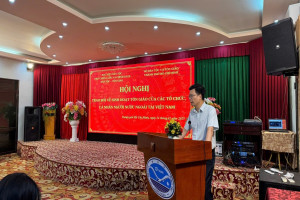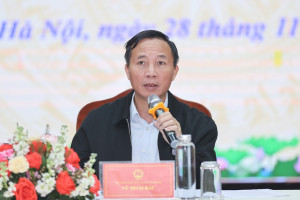
The usual Christmas pageants, carols and midnight Masses are being replaced during the 2020 coronavirus pandemic with fast-filling attendance registration forms, services on demand and efforts by an exhausted America to get creative for what’s usually one of the biggest holidays of the year.
As in the rest of the country, rules in the D.C. region about gathering vary from place to place. The District and counties in Maryland and Virginia each have different attendance limits on in-person services. Restrictions can also vary by denomination and, in some cases, by church.
Generally, religious leaders in the region predict a minority of people will physically be in church on Christmas Eve and Christmas Day, but the ones who attend will in some instances have circumvented wait-lists and long lines. Other faith leaders have urged Christians to stay away from gatherings to reduce the spread of the virus, and they say the most apt way in 2020 to mark the narrative of Jesus’ birth is to focus on improving housing and health care.
For Catholics in the Archdiocese of Washington, expanded access to church — and thus the core sacrament of Communion, wherein Catholicism teaches Jesus is present in the bread and wine — came only after a lawsuit challenging the city’s 50-person cap per church as unconstitutional. A few days after the suit was filed, D.C. Mayor Muriel E. Bowser (D) raised the cap to 250 people, or 25 percent capacity, whichever is smaller.
“At Christmas we celebrate the birth of Christ, and no city requirement is going to affect that. But it’s still disheartening that I have to think about city requirements when considering my religious obligations and attendance,” said Emily Lataif, 26, who lives in the Brookland neighborhood in Northeast Washington and will mark her first Christmas away from her big family in Georgia.
She has friends who were turned away from worship elsewhere in the archdiocese and said she hoped once she decided where to sign up, there would be spots on Christmas.
At the Basilica of the National Shrine, the country’s largest Catholic church building, Bowser’s new rules mean the 3,000-seat church can host 1,750 people total over seven Masses on Christmas Eve and Christmas Day, said Monsignor Walter Rossi, the rector there. Last year over the holiday, 13,650 people came to worship.
By Sunday evening, all three Christmas Eve Masses were full, as was noon Mass on Christmas Day. There were limited spots available for sign-up on Christmas Day. The Mass at 10:30 p.m. on Christmas Eve and the one at noon on Christmas Day will be live-streamed.
Given the recent surge in coronavirus infections, though, the Rev. Tom Bowen, director of the Mayor’s Office of Religious Affairs and a social justice minister at Shiloh Baptist Church, said his sense is that most people in the District won’t be inside a church on Christmas this year.
“Many folks tell me, ‘I don’t care if church opened back up, we’re not coming back until there is a vaccine,’” he said. He noted a trend other religious leaders have observed around the country during the pandemic: While some people are falling out of the habit of attending regular in-person worship, others are browsing additional services. Some congregations have described a significantly larger online audience since March.
With some churches putting their services on-demand, he said, “we may have some binge-watching.” Bowen said he hopes people will consider not going to communal in-person worship.
“I hope people will look at the science. And at the same time will have their spiritual needs met,” he said.
The lack of a regular Christmas routine — be it church or traditions of seeing certain family and friends — plus the powerful need for positive news have many Americans pouring new energy into making the holiday uplifting. Christmas trees and decorations were up earlier than usual this year, and some clergy say many are reflecting on the season’s meaning in a new way.
“Christmas is going to come whether there’s a pandemic or not. Whether we have restrictions or not. People are looking for something to celebrate, and Christmas brings people hope, joy and also new life,” Rossi said.
The Rev. William Lamar IV is pastor of the Metropolitan African Methodist Episcopal Church in Washington, which has been closed since March and has no plans to immediately reopen. However, he said the predominantly Black church, during a year that has seen intense focus on racism and inequity — as well as the first Black woman elected vice president — has come together.
“People have stepped it up. We have doubled our budget for food relief this year. And we are giving more gifts to kids than ever — by far,” he said. “People want to help.”
Lamar’s is far from the only church that is experiencing more charitable giving. While needs are up due to the pandemic shutdown’s impact on the economy, multiple denominations in the region said people who can afford to donate are donating more than usual this holiday season.
On Christmas, the congregation will have its usual services online. In his sermons, Lamar will continue his pre-pandemic effort to bring the story back to its ancient narrative.
“The Christmas narrative has been sanitized for mass consumption. This is a story of an Afroasiatic young woman, a preteen who is an unwed mother. She is refused housing and health care. Who gives birth among animals,” Lamar said. “If you start from that, the work of Christmas is health care. The work of Christmas is housing. … If you care about Christmas, what we want to do is alleviate the suffering of the Marys out there, the ones among us who we drive past and give no thought to.”
In a way, the pandemic has pushed suffering more into our vision this Christmas, he said. For people who can quarantine in the “comfort of their own warm home,” it might mean you’re likely to give less thought to the “Marys.”
Some congregations are doing a hybrid of in-person and virtual services. The Episcopal Diocese of Washington, which includes D.C. and suburban Maryland, has about 12 of its 88 churches doing a hybrid. An example would be the Church of the Epiphany on G Street NW, which will host two sidewalk services on Christmas Eve, complete with Communion.
Catholics, for whom Communion is a sacrament that signals their union with the Church, have been given dispensation during the pandemic, including in this region by the two bishops. People who can attend are still encouraged to do so. In the Diocese of Arlington, with 460,000 Catholics, all 70 parishes will be holding public Christmas Masses.
Mass attendance has been fluctuating, the diocese said, at about 30 to 40 percent of what it was before the pandemic.
According to Pew Research, about half of Americans in 2017 said they planned to go to church on Christmas. Eighty-two percent said they planned to gather with family or friends.
Ron Jacobs, a 45-year-old lawyer from Chevy Chase, had wanted to attend his regular Christmas Eve services at Blessed Sacrament parish with his wife and three children. However, his wife and children haven’t felt comfortable in church since the pandemic, and he said he realized a few days ago that he had waited too long to reserve one of the limited number of spots.
With all of them filled, he was trying to hatch a meaningful plan for the family out of TV Mass — which his kids jokingly call “TV church” — and other activities. They will also be missing their usual routine of driving Christmas Day to New Jersey to see his in-laws.
“To have missed Easter was incredibly difficult,” Jacobs said, “and now, to have Christmas be just out of reach.”
Source: washingtonpost.com/Michelle Boorstein




